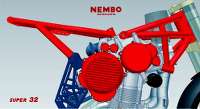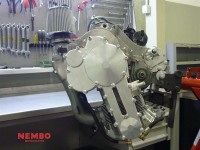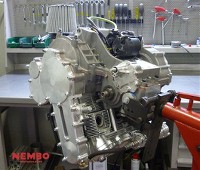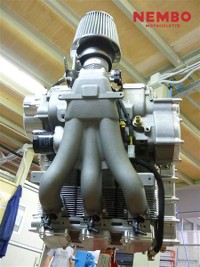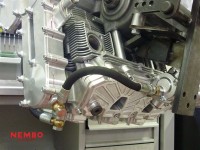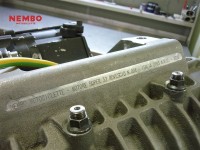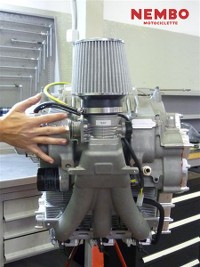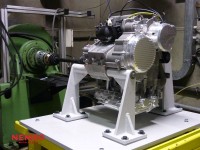DieHard Battery vs. Gary Numan
Tags:
Carros,
DieHard,
Gary Numan,
Intervalo Comercial,
Mecânica,
Música,
Propagandas de Carros,
Publicidade
Publicado: quarta-feira, 27 de outubro de 2010 às 17:33
Permalink:
Copiar
Link copiado para a área de transferência!
Houve um erro ao copiar o link para a área de transferência.
Uma imagem
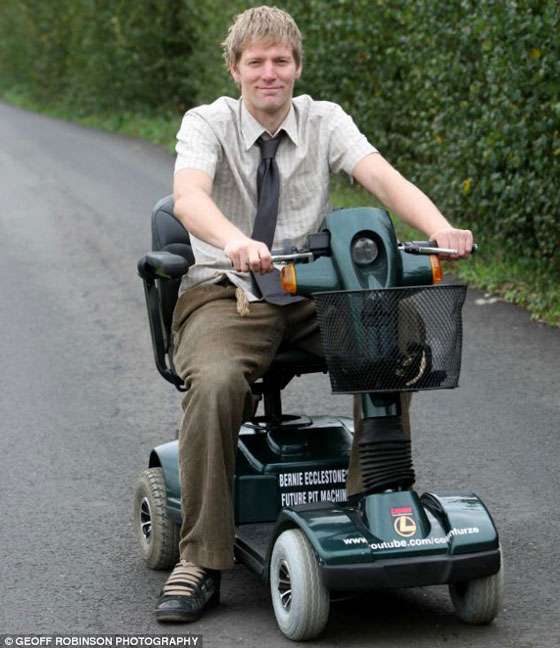
O britânico foi cogitado para entrar para o Guinness Book. Para isso, precisa ultrapassar os 100 km/h. Colin diz que pode fazer isso sem problemas. Em breve, fará um teste de tempo, com cronometragem oficial, e então poderá registrar seu nome no livro para a posteridade.
Será que Bernie Ecclestone realmente gostaria de adquirir esse veículo para comandar a Fórmula 1 com mais rapidez quando tiver 100 anos de idade?
Publicado: quarta-feira, 27 de outubro de 2010 às 12:26
Permalink:
Copiar
Link copiado para a área de transferência!
Houve um erro ao copiar o link para a área de transferência.
Carros testam níveis de deslizamento de pistas de aeroportos
Antigamente, essa tarefa era relegada a um skiddometer, um reboque puxado por um caminhão ou algum outro veículo pesado. As deficiências dessa configuração ficaram claras desde o início, e os aeroportos procuraram por algo mais simples de testar. Na Suécia, terra de Saab e Volvo, isso fica fácil.
A Saab começou a produzir veículos especiais para medir o atrito das pistas dos aeroportos no início dos anos 1970. Vários modelos foram equipados. Como funciona?
Uma quinta roda é montada na traseira e conectada às rodas através de uma corrente de transmissão. Ela é pressionada para baixo por uma força de 136 Kg quando o carro está em velocidade. Um deslizamento entre 10% e 15% dessa roda permite cálculos constantemente variáveis do atrito oferecido pela superfície. Os sensores do carro transmitem sua leitura para as torres de controle em tempo real, permitindo mudanças imediatas e precisas nos requisitos de frenagem das aeronaves.
Vários aeroportos do mundo inteiro passaram a utilizar esses testadores da Saab, por exemplo, os de Munique, Oslo, Washington DC, Chicago, Albany e Buffalo.
Publicado: quarta-feira, 27 de outubro de 2010 às 07:37
Permalink:
Copiar
Link copiado para a área de transferência!
Houve um erro ao copiar o link para a área de transferência.
The new Porsche 911 GT2 RS: Motorshow Trailer
Publicado: terça-feira, 26 de outubro de 2010 às 17:20
Permalink:
Copiar
Link copiado para a área de transferência!
Houve um erro ao copiar o link para a área de transferência.
Nembo Motociclette mostra motor invertido
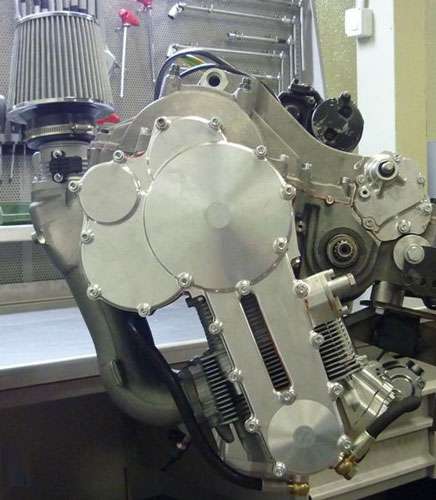
Chamado Nembo Motociclette Super 32 Rovescio, o motor é refrigerado a ar, possui três cilindros em linha, tem opções de capacidade cúbica de 1.850 e 2.100 cm³, gerando 160 e 250 CV, respectivamente. O propulsor é disposto no chassis da motocicleta com o cabeçote para baixo.
De acordo com Daniele 'Titus' Sabatini, o bloco, a parte mais resistente do motor, pode ser isolado da parte estrutural dominante do chassis, na maioria dos padrões de design de motocicletas. Sabatini também acredita que os cilindros, dispostos na parte inferior da motocicleta, permitem que sua refrigeração torne-se mais eficiente, sem que haja a necessidade de construir entradas de ar, o que deixa a estrutura final da motocicleta mais leve.
Daniele "Titus" Sabatini, owner, project leader and designer of Nembo Motociclette, presents his new engine, the "Super 32 rovescio" made to equip the naked motorcycles he will build in small series on request for road/track use.
The engine "Super 32 rovescio" contains in the name its main features: three-cylinder 2000 cc (122.05 cubic inches) inverted or if we like," upside down ".
I've chosen this particular engine architecture for both functional and aesthetic reasons. Loving motorcycles as the highest dynamic expression of the fusion between driver and machine, I have a concept of the bike that sees the engine at the first place.
I like air-cooled motors or also water cooled just if with finned cylinders and heads. However, in the current naked sport bikes, often the engine is too much hidden and totally water-cooled, practically soulless. It pains me to see it humiliated and smothered under frames and plastic components. So, I've thought that a good way to get a well exposed and updated air-cooled engine in a contemporary naked sport bike was just to invert it!
As you know, the inverted in line engines are not new: they have equipped many famous combat aircraft especially of World War II, the new thing lies in equipping with them a motorcycle to combine form and function in an interesting way.
I wanted to build a high performance big-bore motorcycle, looking new but also with a classic and timeless beauty built with very few and high quality metal and carbon-fibre components and very light. I was not interested to make a bike with an extreme look, I liked to make a bike that looked like a true motorcycle and not like a manga robot.
Inverting the engine allowed me to achieve these results. I've designed and built a motorcycle, the "SUPER 32", where the engine, by mean of the super compact crankcase, totally placed over the cylinders and the heads, works as a real chassis while the cylinders do not participate in any way in the structural functions.
I decided to add a small trellis in the front and an essential saddle frame, not connected to each other (made in steel, because given the dimensions involved, carbon, aluminum or titanium are practically useless), above all for aesthetic and traditional reasons than for real structural needs, because the connection to the steering column and to the saddle can be obtained directly in the crankcase shape and the carbon-fibre swingarm directly pivots in the crankcase.
So I had to build a naturally aspirated inverted motor first, an Euro 3, with precise technical and aesthetic specifications and I've found an ideal interlocutor in the excellent, and appreciated Chief Engineer Giovanni Mariani.
Giovanni, with his young and skilled design team, composed of the very good engine Chief Designer Fabio Falcone, the talented Design Engineer Alessandro Sobacchi and the capable Engine Designer Marco Fasani, has developed for Nembo Motociclette a very powerful and extremely compact engine, making possible the engine layout I liked to get. Sandro Carò, gentleman mechanic (where the border between mechanic and engineer is so ephemeral), has personally taken care of the engine assembly and his suggestions have been so precious.
The "Super 32 Rovescio" Euro 3 engine can have displacements ranging from 1850 cc to 2100 cc, a power ranging from 160 bhp to 250 bhp, and torque values between 16.5 and 24.5 kgm, without the use of compressors.
The peculiar lay-out of the "Super 32 Rovescio" allows an easy access to any part of the engine makes the heads and the cylinders totally exposed to the air and well visible, with the intake manifolds naturally upward in front of the cylinders and the exhaust manifolds downward behind them.
The result is that the "SUPER 32" bike has an exciting shape, is very light, with a dry weight ranging between 140 kg and 155 Kg depending on the requested outfit, has a profitable weight distribution and can be "short" or "long": in the present configuration has a carbon-fibre swingarm of 670 mm and a 1450 mm wheelbase.
The "SUPER 32" bike is built on request and the first two prototypes will be presented before Christmas 2010.
Nembo inverted 3 cylinder engine on the dyno
SPECIFICATIONS
Dimensions:
Maximum width : 480 mm
Maximum height: 480 mm
Maximum length: 420 mm
Technical data – air/oil cooled prototype engines
Engine : 1814cc inverted - 4 stroke - 3 cylinders – Euro 3
Bore : 100 [mm]
Stroke : 77 [mm]
Displacement : 1814 [cc] - 110.7 cubic inches
Compression ratio : 10.5 : 1
Valvetrain : SOHC (single over head camshaft)
Number of valves : 2 valves per cylinder
Cooling system : air/oil cooled
Lubricating oil system: dry sump
Transmission : 6 speed
Maximum power : 160 [bhp] @ 7000 [rpm]
Maximum torque : 16.5 [kgm] @ 5250 [rpm]
Maximum engine speed : 7500 [rpm]
Weight : 90 [kg]
Engine : 1925cc inverted - 4 stroke - 3 cylinders – Euro 3
Bore : 103 [mm]
Stroke : 77 [mm]
Displacement : 1925 [cc] -117.47 cubic inches
Compression ratio : 11.5 : 1
Valvetrain : SOHC (single over head camshaft)
Number of valves : 2 valves per cylinder
Cooling system : air/oil cooled
Lubricating oil system: dry sump
Transmission : 6 speed
Maximum power : 200 [bhp] @ 7500 [rpm]
Maximum torque : 19 [kgm] @ 5500 [rpm]
Maximum engine speed : 8000 [rpm]
Weight : 85 [kg]
Engine : 2097cc inverted - 4 stroke - 3 cylinders – Euro 3
Bore : 107.5 [mm]
Stroke : 77 [mm]
Displacement : 2097 [cc] - 127.97 cubic inches
Compression ratio : 12.5 : 1
Valvetrain : SOHC (single over head camshaft)
Number of valves : 2 valves per cylinder
Cooling system : air/water cooled
Lubricating oil system: dry sump
Transmission : 6 speed
Maximum power : 250 [bhp] @ 8000 [rpm]
Maximum torque : 24.5 [kgm] @ 6500 [rpm]
Maximum engine speed : 9000 [rpm]
Weight : 85 [kg]
Tags:
Mecânica,
Motocicletas,
Nembo
Publicado: terça-feira, 26 de outubro de 2010 às 12:27
Permalink:
Copiar
Link copiado para a área de transferência!
Houve um erro ao copiar o link para a área de transferência.
MINI Cooper S de brinquedo
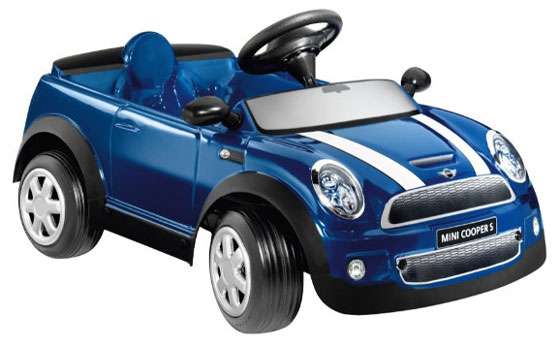
Além disso, há conjuntos de macacão e jardineira e um cachorro de pelúcia. A MINI também lançou seu calendário 2011, com trabalhos do artista e designer gráfico Wolfgang Block.
No catálogo de produtos de Natal da montadora há desde itens esportivos, como um capacete Jet feito de fibra de vidro, até objetos de decoração, como um relógio cuco cromado, no formato do velocímetro tradicional da marca inglesa.
Tags:
Brinquedos,
Carros,
MINI
Publicado: terça-feira, 26 de outubro de 2010 às 08:14
Permalink:
Copiar
Link copiado para a área de transferência!
Houve um erro ao copiar o link para a área de transferência.
Assinar:
Postagens (Atom)

